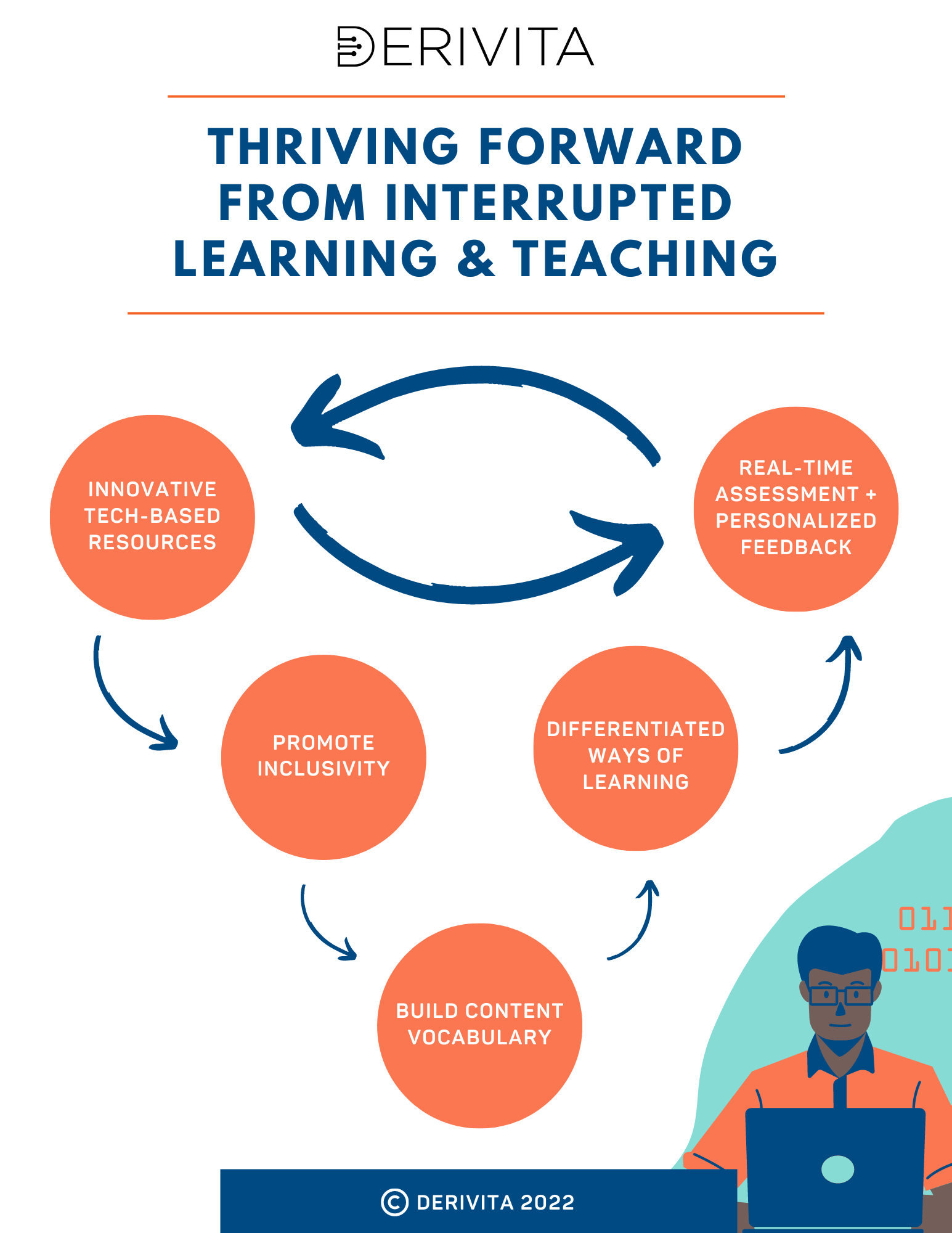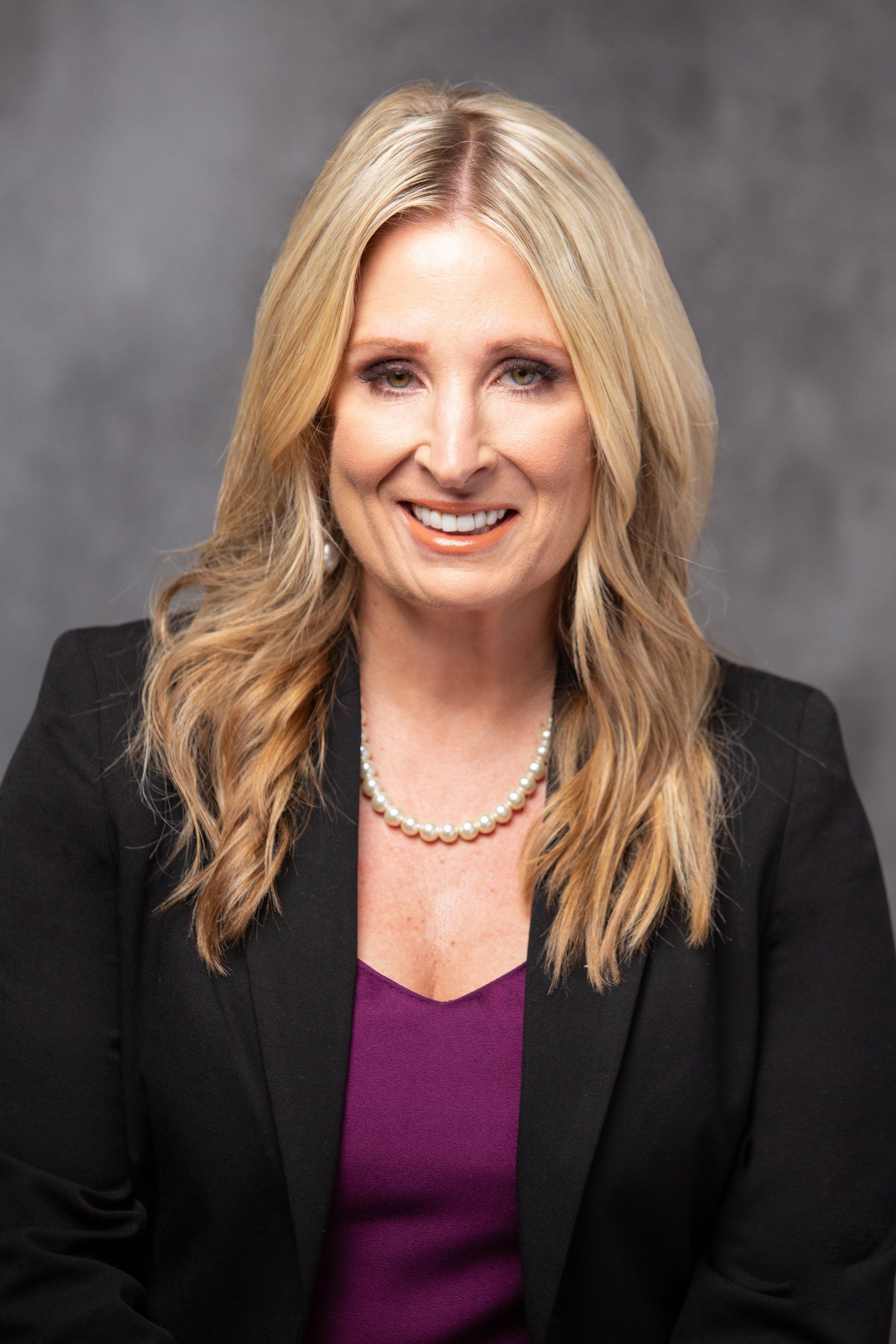Derivita’s Senior Director of Education Solutions,
Dr. Bonnie A. Hain, sat down with
Dr. Linda Chambers, Director of Special Education for Frederick County Public Schools to gain perspective on the impacts of the pandemic on students and teachers as well as what companies, like Derivita, can do to help support schools to move forward.
Q: On the heels of the pandemic, most schools have tried to go “back to business”; however, educating our youth today is vastly different from what everyone knew two years ago. What differences have you noted?
A:
Students have experienced interrupted learning and impacts to their social emotional well-being; many are struggling to reconnect. Initial research and anecdotal experiences seem to indicate that the impacts are most evident for those early learners whose first educational experiences were from their home in a virtual learning environment, those who experienced isolation from social engagement, and those from populations who have historically demonstrated learning gaps (such as English second language learners, differently abled, and marginalized students).
Educators have also experienced interrupted teaching. Educators had to learn to teach in a totally different way in a very short time. This resulted in many seasoned educators leaving the profession they knew and loved, while others with less experience and perhaps fewer certifications had to step into a new role.
Given the complexity of inter-related factors, we are unlikely to know the full effects and best means to address interrupted learning as a result of the pandemic on K-12 education for decades to come. But we have to do what we can to address the gaps in learning we are seeing now while we continue to study and learn what will be most effective.

Q: What are some things you want providers of educational products to do to support these efforts?
A: 1. Provide schools with innovative technology-based resources.
In many cases, technology-based resources can help provide greater access to quality content than print can. They allow for ease of representation of ideas, both for content presented by the teacher and in the ways students access and represent their learning.
One simple example of this is font adjustment. Consider the example of Juan, who needed a large-print assessment book as a result of vision impairment. The book was almost as big as he was. For this reason, all the other students knew he was “special” and different. When we switched to a technology-solution with an adjustable font, Juan could take the test using the same device as others. He got the support he needed without anyone else realizing he needed support. People don’t want to be different, and Juan was able to share that he felt so much more part of his class when he could just use the font adjustment. Similarly, when Juan shared his ideas as a writer, he didn’t need to write in “the big book,” producing oversized print. With a technology-based resource, he was able to either keyboard with large print (and the teacher then adjusting the font size to smaller print when reading what Juan produced) or via speech to text inputs.
2. Provide tools that make learning with real time formative assessment and personalized coaching/feedback easier.
We learn by seeing patterns in what we do/do not have right and by shaping our performances based on feedback.
For example, think of a toddler learning to walk. They crawl to a stand and fall down, adjust their stance, then try again, and gradually learn to walk more without falling. Through an effective formative assessment process and coaching feedback cycle, teachers ensure that students can demonstrate what they know and the teacher can easily and readily recognize where there are gaps. Yet, right now, there are few formative assessment tools that also provide personalized coaching/feedback. Teachers need to read and evaluate so many responses and so quickly–and then figure out how to differentiate learning. We need innovative solutions that make this work more consistent and easy to employ.
3. Create products designed to promote inclusivity and a sense of belonging.
When a student gets feedback that an answer is wrong and that feedback is in the shape of a big, red X, with no encouragement to try again, the student may quickly move into the failure-frustration cycle (The Learnwell Projects, 2021).
Learners are inquisitive and want to be successful; they want to understand, therefore they put forth initial effort and when they underperform, they exert more effort and underperform again, all the while they get angry, motivation wanes, and it becomes easier to give up than to try again. Publishers can support students by framing feedback with a growth mindset and positivity when students don’t get it right the first or even the second time (i.e. you don’t have it quite yet, rather than not at all).
4. Make sure your products support differentiated ways of learning.
Universal Design for Learning (UDL) is a framework to improve and optimize teaching and learning for all people based on scientific insights into how people learn. The design of instructional goals, assessments, methods, and materials can be customized and adjusted to meet individual needs (CAST Inc., 2022).
Students have different ways to show they know/understand concepts. Some are better than others at using their words, some are better at non-visual representations. Unless a concept requires a specific way to show understanding/knowledge (e.g. to show one can write, one needs to produce written text), product providers should give the opportunity and examples for students to represent learning in multiple ways.
5. Continue to help us build content vocabulary.
In most disciplines, knowledge of vocabulary equals knowledge of the content, so it’s critical for providers to use the best research to support content vocabulary development. A teacher’s role is to uncover which words students already “own'' as a part of their listening and speaking vocabulary and teach the unknown words that are critical to the content being learned (Stone & Urkuhart, 2008). Marzano and Haystead (2009) found building vocabulary as one of the strongest high yield instructional strategies for student success in any content through a meta-analysis of instructional strategy studies.
I recall the importance of teaching vocabulary to Demetrius, a 6th grader with Dyslexia, when we were learning 2 digit addition. asked Demetrius to provide the sum of the 2 numbers. He continually asked me why we only would use “some '' of the numbers in the problem and I initially dismissed the question. He continued to use his understanding of the word “some” and 32 + 21 for him was 52 because he thought he should only use “some” of the numbers and decided to eliminate the 1 in 21. Until I explicitly taught him that sum was the total of both numbers in the equation, Demetrius was unable to move forward successfully. Publishers can help build student academic vocabulary by using grade and content appropriate vocabulary with strong context clues and, where needed, gloss terms to build student knowledge of academic vocabulary.
Derivita is able to provide these resources to address interrupted learning with our full suite of tools,
accessible directly in an existing Learning Management System (LMS).
Learn more by requesting a demo and clicking below:
Sources:
- The Learn Well Project , 2021 https://thelearnwellprojects.com/thewell/help-students-avoid-the-failure-frustration-cycle/
- CAST, Inc., 2022 https://www.cast.org/impact/universal-design-for-learning-udl
- Removing Limits to Learning with Systematic Vocabulary Instruction, Stone and Urkuhart (2008), MCREL.org. https://files.eric.ed.gov/fulltext/ED544614.pdf
- Meta-Analytic Synthesis of Studies conducted at Marzano Research Laboratory on Instructional Strategies, Mark W. Haystead & Dr. Robert J. Marzano (2009), Marzano Research Laboratory, Powered by Solution Tree.

